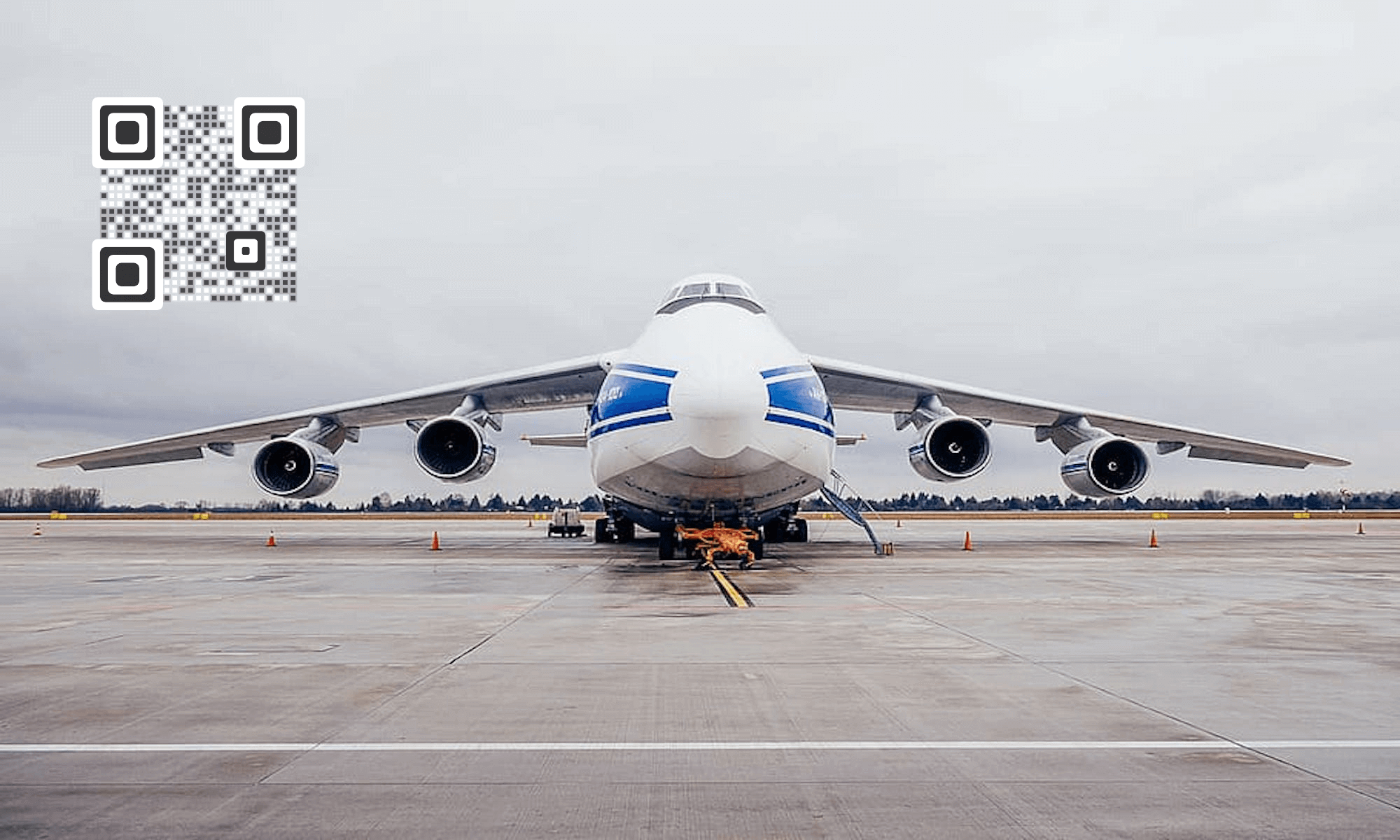The usage of QR Code today is unchallenged. From ensuring worker safety in underground mines to engaging customers high in the sky—QR Codes are not an exemption in any field.
And in the aviation industry, QR Codes can be used for a variety of purposes. In every sector—aeronautical engineering, airport management, and airlines, QR Codes can add to more efficiency.
In this article, we will show you some use cases of QR Codes in the aviation industry. And how big names in this industry are already using it.
Keep reading.
A. A brief about QR Codes
QR Codes are popularly known as 2D barcodes. By scanning them via a smartphone, you can access the information encoded. From functional use cases such as payments to marketing use cases such as promotion of a product—QR Codes are used in all.
Here are the reasons behind the popularity of QR Codes:
1. Link unlimited information
QR Codes can link both text based and multimedia based content. You can link a QR Code to a coupon code, training videos, and a passenger’s database.
2. Damage Resistant
QR Codes can resist damage upto 30%. For example, you can place QR Codes on workstations where they are vulnerable to slight damage. And still keep their scanning capability intact.
To know more about it, you can refer to this detailed guide on error correction.
3. Track scanning activity
With Dynamic QR Code, you can track the scanning activity. That is, you can get region, district, browser, and appliance specific data on the scanning activity of QR Code. Plus, you can also update Dynamic QR Code whenever you want.
4. Add design
Do not think that QR Codes come only in mundane black-and-white colors. You can add design to QR Codes and make them look completely branded. That is, you can add a logo, change background color, and add a background image to your QR Code.
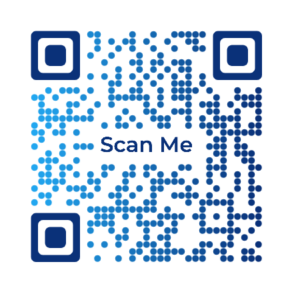
So, as a part of the aviation industry, you can exhaust QR Code technology to increase efficiency. In the next section, we will show you how.
B. Use cases of QR Codes in aviation
QR Codes in aviation industry can be used for diverse purposes. Given your field in aviation, know how you can use QR Code in your field:
1. Aeronautical engineering
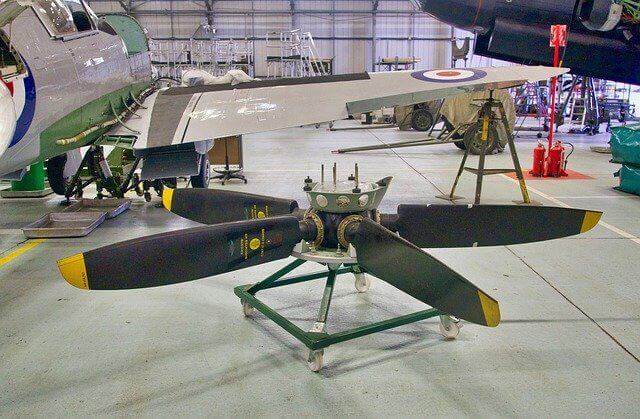
Since your field is concerned with the development of aircrafts, it is important to keep the workers properly trained and safe. See how QR Codes can ensure this:
i. To keep aerospace equipment in check
When you have to provide detailed information about the equipment, you step back because of limited space.
And you know that QR Codes are capable of encoding large amounts of information. You can thus encode details such as operation conditions, maintenance schedules, and allocated aircraft in a QR Code. And place it on aerospace equipment.
Since they occupy less space, they will fit easily on any equipment.
For this, you can create dynamic Rich Text QR Code. Since they are dynamic in nature, you can update the QR Code regularly.
This way, you can ensure that the machinery is being timely repaired and maintained. And the job is performed correctly.
ii. Easily manage inventory
With QR Codes, you can easily track and manage aerospace equipment inventory. Since delays in your industry cannot be entertained, you can put a QR Code label on each equipment containing details on scheduled project and time of use.
Plus, you can also add details such as equipment ownership and allocation in a QR Code. This will help eliminate delays and mistakes in aircraft repair.
For more information, you can refer to this detailed guide on inventory management with QR Codes.
iii. Track equipment
With Dynamic QR Codes, you can know the exact GPS location of each scan. This way, you can ensure live tracking of aerospace equipment.
All you need to do is create QR Code labels and stick it on each equipment. The scanning equipment or smartphone which reads the QR code can then send its current location.
iv. To provide training videos
QR Codes can help you avoid accidents and mishaps that can happen in handling aerospace parts. You just need to create a QR Code and link training video to it. And then, paste it on the equipment.
These videos will act as an instant guide. And increase the safety of workers operating on these equipment at the workstation.
2. Airport
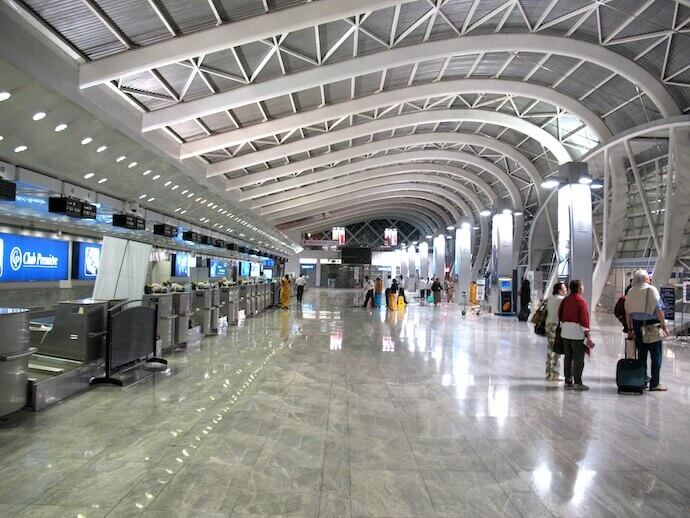
Airports are much more than only spots for airline check-ins. One can enjoy various facilities such as shopping, reading books, and access to ATM.
And with QR Codes, you can add both a functional and engaging element to airport premises. See how:
i. QR Code on boarding pass
Some of the top airlines today such as Vistara and Air India issue mobile boarding passes with QR Code. This QR Code acts as a unique link to all your flight information.
After passengers complete the web check-in, they need to scan the QR Code on their web boarding pass. This way, they can collect the printed copy of their boarding pass.
Here, QR Code acts as a sustainable solution by facilitating a paperless check in. Plus, it eliminates the trouble of having a misplaced boarding pass.
ii. QR Codes on airport walls
Shops at the airport can use QR Codes to advertise products of shops on the airport. With QR Codes, shopkeepers can:
- Encode their website link and drive more traffic
- Link social media accounts and increase following
- Encode Google form link to know customer feedback
Plus, airport authorities can use QR Codes to guide the passengers about necessary information about airport check-ins.
For example, the Transport Security Administration, USA has posted QR Codes on various spots at the airport. Upon scanning, the passengers can get information on what they can and cannot bring at the airport.
The adoption of QR Codes has helped reduce the time it takes for baggage and passenger check-in. The reason being—passengers have become educated of the rules and regulations of airport check-ins.
3. Airlines
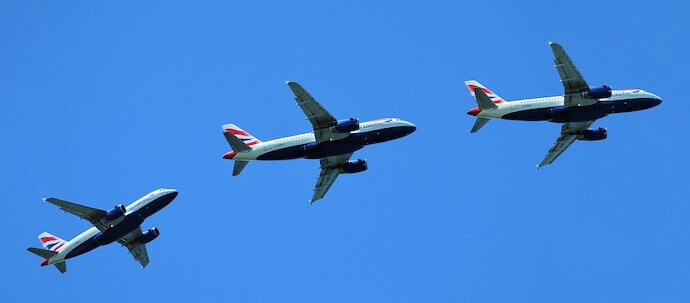
Airlines operating across the world are using QR Codes for diverse purposes. See how:
i. To get customer feedback
QR Codes can provide an easy way to provide customer feedback. All you need to do is create a google form with relevant questions. And then encode the link in a QR Code.
Upon scanning, your customers will be able to fill the form effortlessly.
For example, Airbus, the world’s largest airlines manufacturer uses QR Codes to collect customer feedback on each spare part delivery coming from France.
This QR Code is printed on the receipt of a package. Upon scanning, the customers are redirected to a webpage where they can rate their level of satisfaction.
ii. For engaging customers
As an airline, you can promote your website by encoding the link in a QR Code. Upon scanning, people will directly land on your website. This will save their time and effort on manually typing the address.
For example, as a part of their advertisement strategy, JetBlue used a QR Code on its posters to engage customers better.
Upon scanning, customers are redirected to subscribe to their newsletter. Besides, the customers can access a free travel guide upon scanning.
iii. To promote airline app
With QR Codes, you can increase app downloads. All you need to do is create an app QR Code. That is, link the QR Code to the app.
Upon scanning, the customers will be redirected to your app link. Here, they will be able to download your app effortlessly. And this way, you will get a hike on your app download.
For example, AirAsia, a Malaysian based airliner, uses QR Codes to encode its app link. The airline has placed this QR Code on its website. And has written a help note ‘Scan to get your own AirAsia Mobile App now!‘ , along with scanning instructions.

Upon scanning, the visitors are redirected to a mobile optimized page. Here, they can choose the right app store for their device and download the app.
Now let’s move ahead to show some best practices that you should follow while creating QR Codes.
C. QR Code—Best Practices
Here are some best practices, which will help you create QR Codes flawlessly.
1. Export in vector format
Vector images are high-resolution images. And do not pixelate when scaled. Hence, you can easily place a QR Code on large surfaces such as a billboard.
Common vector formats are SVG, PDF, EPS, and PS.
2. Add design
Adding design is especially recommended if your use case is promotional. Here, QR Codes act as a point of engagement. And attract 50-200% more scans.
For example, Air Asia, uses completely personalized QR Codes to promote its app. It is a bright red QR Code that has the AirAsia logo in the center. The aim is to drive more-and-more people to download the app.
3. Add CTA element
It is important to tell end users what they will get after scanning the QR Code. So, just write a simple help note such as ‘Scan to visit website’.
This will act as a CTA element. And prompt people to scan the QR Code.
So, these were some of the ways how QR Codes in aviation industry can be used. Given your field, you can create QR Codes using professional online QR Code generator tools such as Scanova.
[cta1 caption=”Create a QR Code to increase efficiency” content=”Create a visually-appealing and dynamic QR Code for your use case” buttontext=”Create QR Code now” destination=”https://scanova.io/design-qr-code-generator.html?utm_source=smb_sd_qr-codes-in-aviation_company_bod&utm_medium=blog&utm_campaign=content#/chooseqr/” image=”https://scanova.io/blog/wp-content/uploads/2016/12/qrcode-8.png”]